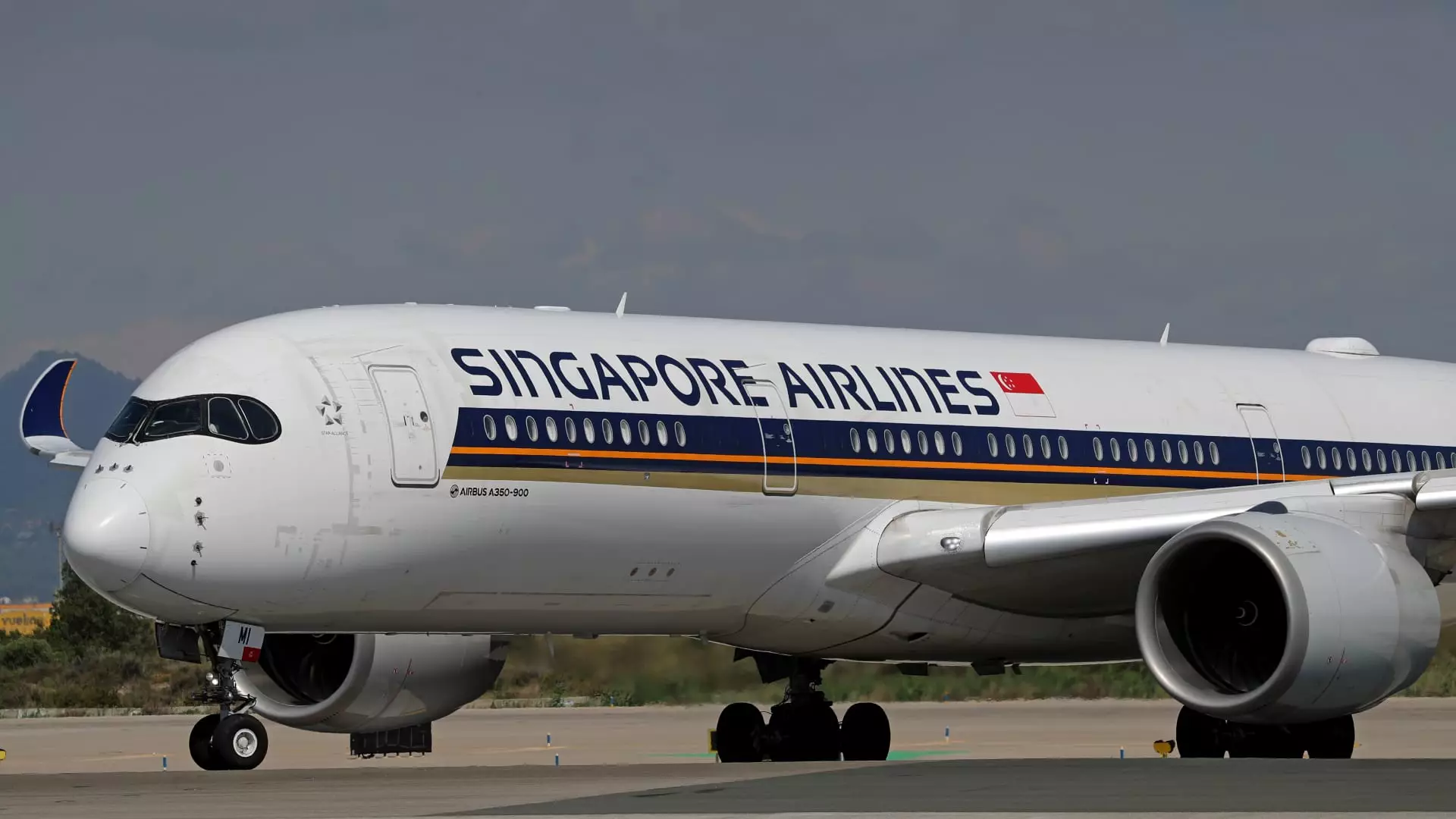Singapore Airlines (SIA), the flag carrier of Singapore, recently experienced a significant downturn in its financial performance, with its net profit witnessing a staggering nearly 50% decrease for the first half of the fiscal year spanning April to September. This alarming report prompted a sharp reaction from investors, leading to a 6.2% drop in the airline’s share price at the market opening, eventually settling at a decline of 3.57%. The airline’s financial health is indicative of broader trends within the aviation industry, shedding light on intense competition and shifting market dynamics.
During the first half of the fiscal year, Singapore Airlines reported a net profit of 742 million Singapore dollars (approximately $559.12 million), representing a significant 48.5% plunge from the SG$1.44 billion exhibited during the same timeframe the previous year. This downturn was mirrored in the operating profit, which fell by 48.8% to SG$796 million, a notable decrease from the prior year’s SG$1.55 billion. Conversely, the airline’s revenue experienced a modest increase of 3.7%, reaching SG$9.5 billion. These mixed results highlight not only the challenges SIA faces but also the balancing act of maintaining revenue in a fiercely competitive sector.
Singapore Airlines attributed the decline in operating profit to heightened competition and increased capacity, particularly in key markets essential for the airline’s operations. The intensified competition led to a reduction in yields—a critical metric determining profitability. During an earnings briefing, Chief Commercial Officer Lee Lik Hsin underscored the global context of major airlines ramping up their operations back to pre-COVID levels, thus amplifying competitive pressures. CEO Goh Choon Phong further echoed these sentiments, emphasizing that the restoration of capacity was inversely affecting yield levels, compounding the challenges faced by SIA.
Despite the drop in yields, passenger traffic did show a year-on-year increase of 7.9%. However, this growth fell short of matching the airline’s 11% expansion in passenger capacity, resulting in a reduction of the passenger load factor by 2.4 percentage points to 86.4%. Such metrics illuminate the disconnect between supply and demand in SIA’s operations, suggesting that while travel demand is recovering, it is not keeping pace with the expanded capacity, further pressuring yields and profitability.
In light of these challenges, Singapore Airlines remains committed to its growth trajectory. Despite acknowledging tough competition, Lee reaffirmed the airline’s strategy of continual capacity expansion, reinforcing SIA’s historical approach of not withholding growth in the face of competitive threats. The airline is also gearing up for the future with a significant investment—announcing a SG$1.1 billion cabin retrofit program for its long-range and ultra-long-range Airbus A350 jets, completed by 2030. As SIA navigates the challenging landscape, it anticipates robust air travel demand in the latter half of the financial year, albeit against a backdrop of ongoing competitive pressures.
This comprehensive strategy signals SIA’s dedicated approach to adapt and thrive amidst a turbulent aviation market, ensuring that the airline positions itself strongly in a post-pandemic world.

